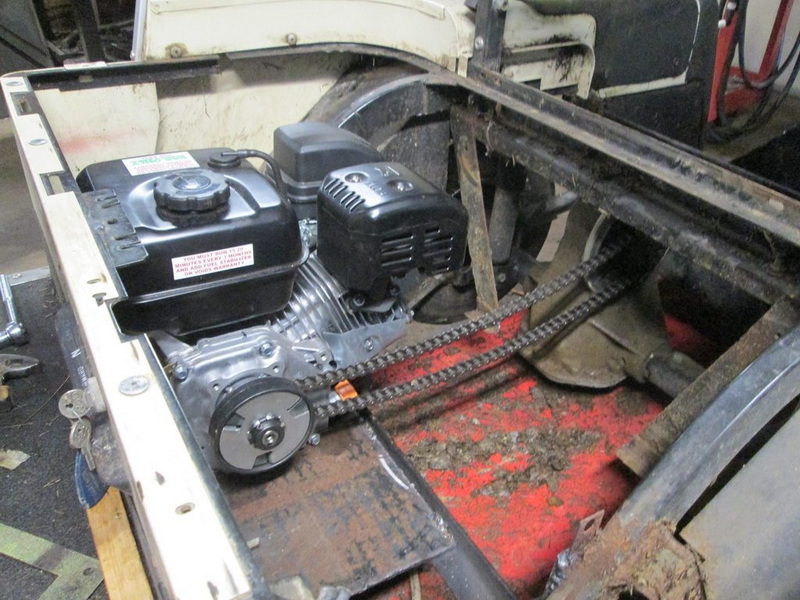Content Menu
● Introduction
● Understanding the Basics
>> Electric Golf Carts
>> Gas-Powered Golf Carts
● The Conversion Process
>> Remove Electric Components
>> Install Gas Engine
>> Add Fuel System
>> Install Transmission
>> Modify Frame
>> Install Controls
>> Exhaust System
● Video Tutorial
● Pros and Cons of Conversion
>> Pros
>> Cons
● Cost Considerations
● Legal Considerations
● Environmental Impact
● Alternatives to Conversion
● Maintenance Differences
● Performance Comparison
● Safety Considerations
● Future of Golf Cart Technology
● Conclusion
● Frequently Asked Questions
>> 1. How long does it take to convert an electric golf cart to gas?
>> 2. Will converting my golf cart to gas void the warranty?
>> 3. Can I switch back to electric after converting to gas?
>> 4. Are there any golf cart models that are easier to convert than others?
>> 5. Do I need special tools to convert my golf cart to gas?
Introduction
Golf carts have become increasingly popular not just on golf courses, but also in retirement communities, large properties, and even some urban areas. As the demand for these versatile vehicles grows, so does the interest in converting electric golf carts to gas-powered ones. This article will explore the process, benefits, challenges, and considerations of such a conversion.

Understanding the Basics
Before diving into the conversion process, it's essential to understand the fundamental differences between electric and gas-powered golf carts.
Electric Golf Carts
Electric golf carts are powered by rechargeable batteries, typically lead-acid or lithium-ion. They are known for their quiet operation, low maintenance requirements, and eco-friendly nature.
Gas-Powered Golf Carts
Gas golf carts run on internal combustion engines, usually fueled by gasoline. They offer longer range, more power, and quicker refueling compared to their electric counterparts.
The Conversion Process
Converting an electric golf cart to gas is a complex process that requires mechanical expertise and specialized parts. Here's an overview of the steps involved:
Remove Electric Components
The first step is to remove all electric components, including:
- Batteries
- Electric motor
- Controller
- Wiring harness
Install Gas Engine
Next, you'll need to install a gas engine. Common choices include:
- 6.5 HP Predator engine
- Honda GX200 clone
- Yamaha G1 engine
Add Fuel System
Install a fuel tank, fuel lines, and carburetor to supply the engine with gasoline.
Install Transmission
Most conversions require a new transmission or gearbox to connect the engine to the drive axle.
Modify Frame
You may need to modify the golf cart's frame to accommodate the new engine and transmission.
Install Controls
Add new controls for throttle, choke, and ignition.
Exhaust System
Install an exhaust system to direct fumes away from passengers.
Video Tutorial
For a visual guide on the conversion process, check out this helpful video:
Pros and Cons of Conversion
Pros
1. Increased range
2. More power for hills and heavy loads
3. Quicker refueling
4. No battery replacement costs
Cons
1. Higher maintenance requirements
2. Increased noise levels
3. Environmental impact
4. Potential legal issues in some areas
Cost Considerations
Converting an electric golf cart to gas can be expensive. Here's a breakdown of potential costs:
- Gas engine: $200 - $500
- Transmission/gearbox: $150 - $300
- Fuel system: $100 - $200
- Exhaust system: $50 - $150
- Miscellaneous parts: $200 - $400
- Labor (if professionally done): $500 - $1000
Total estimated cost: $1,200 - $2,550

Legal Considerations
Before converting your golf cart, check local regulations. Some areas have restrictions on gas-powered golf carts, especially in residential neighborhoods or on public roads.
Environmental Impact
Converting to gas increases your carbon footprint. Consider the environmental implications:
- Increased emissions
- Fuel consumption
- Potential for oil and fuel spills
Alternatives to Conversion
If you're looking for improved performance without converting to gas, consider these alternatives:
1. Upgrade to lithium-ion batteries for longer range and better performance
2. Install a more powerful electric motor
3. Add solar panels to extend range and reduce charging time
4. Consider a hybrid system that combines electric and gas power
Maintenance Differences
Gas golf carts require more frequent maintenance than electric ones:
- Regular oil changes
- Air filter replacements
- Spark plug checks
- Carburetor adjustments

Performance Comparison
Here's how gas and electric golf carts compare in key performance areas:
| Feature | Electric | Gas |
| Range | 30-50 miles | 100-180 miles |
| Top Speed | 12-19 mph | 15-25 mph |
| Torque | High | Moderate |
| Noise Level | Very Low | Moderate to High |
| Refuel/Recharge Time | 4-8 hours | 5 minutes |
Safety Considerations
When converting to gas, keep these safety factors in mind:
- Install proper ventilation to prevent carbon monoxide buildup
- Use appropriate fuel storage containers
- Install fire extinguishers in the cart
- Ensure all modifications meet safety standards
Future of Golf Cart Technology
As technology advances, the debate between gas and electric may become less relevant. Future developments might include:
- More efficient electric motors
- Advanced battery technologies
- Hydrogen fuel cell golf carts
- Autonomous golf carts
Conclusion
Converting an electric golf cart to gas is possible but comes with significant challenges, costs, and considerations. While it can provide benefits like increased range and power, it also introduces maintenance requirements, environmental concerns, and potential legal issues. Before undertaking such a conversion, carefully weigh the pros and cons, consider alternatives, and ensure you comply with local regulations. Ultimately, the decision to convert should align with your specific needs, budget, and values.

Frequently Asked Questions
1. How long does it take to convert an electric golf cart to gas?
The conversion process can take anywhere from 20 to 40 hours, depending on your experience level and the complexity of the cart. Professional conversions may be quicker but more expensive.
2. Will converting my golf cart to gas void the warranty?
Yes, converting your golf cart from electric to gas will almost certainly void any existing manufacturer's warranty. It's important to consider this before proceeding with the conversion.
3. Can I switch back to electric after converting to gas?
While it's technically possible to convert back to electric, it's not practical or cost-effective. The conversion process involves significant modifications that are not easily reversible.
4. Are there any golf cart models that are easier to convert than others?
Some models, like the Club Car DS and Yamaha G1, are popular choices for conversion due to their frame design and available aftermarket parts. However, the ease of conversion can vary depending on the specific cart and your mechanical skills.
5. Do I need special tools to convert my golf cart to gas?
Yes, you'll need a variety of tools including wrenches, sockets, a drill, welding equipment (in some cases), and possibly specialized golf cart tools. If you're not comfortable with these tools, it's best to seek professional help.











































